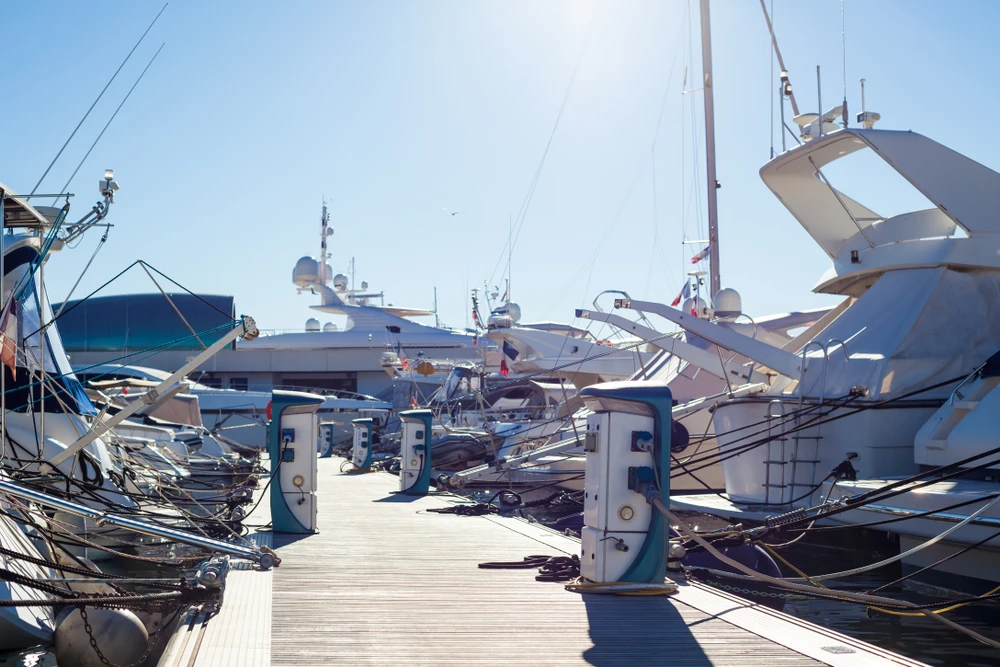Owning a boat brings freedom, adventure and the pure joy of life on the water. But like any valuable investment, it needs ongoing attention to stay in peak condition. At Superior Marine Services, we’ve seen how a consistent maintenance routine not only prevents breakdowns but also keeps your vessel performing beautifully for years.
While major repairs are best left to professionals, many essential upkeep tasks are simple enough for owners to handle with the right guidance. This guide will walk you through the key areas of DIY boat maintenance so you can keep your vessel seaworthy all year round.

Getting Started with Basic Marine Maintenance
Before diving into the engine bay or scrubbing the deck, start by understanding how your boat’s systems work together. Knowing what materials need protection and which small habits prevent large expenses later on forms the basis of effective maintenance. Whether your vessel spends its time cruising calm harbours or tackling offshore conditions, consistent attention is what keeps it dependable and ready for the next trip.
Understanding Your Boat’s Systems
To maintain your boat effectively, start by learning how its major systems connect. Every vessel operates like a small ecosystem; when one part fails, others often follow. Understanding these relationships is key to preventive maintenance and safe operation. Main systems to monitor include:
- Hull and deck: Regular cleaning, waxing and checking for cracks, blisters or osmosis.
- Engine and fuel system: Changing oil and filters, inspecting hoses and ensuring proper cooling.
- Electrical system: Maintaining battery health, cleaning terminals and checking for corrosion.
- Safety equipment: Life jackets, fire extinguishers and signalling devices should always be serviceable.
- Navigation and controls: Ensure steering, throttle and electronics operate smoothly before each trip.
Creating a Maintenance Schedule
A maintenance schedule is the backbone of responsible boat ownership; it turns upkeep from an occasional chore into a habit. With structure in place, you’ll stay ahead of wear and tear and keep every part of your vessel running safely and reliably year-round. Example maintenance intervals include:
- Before every trip: Check bilge pump, battery charge, navigation lights and fluid levels.
- After each trip: Flush the engine, rinse with fresh water and secure a breathable cover.
- Monthly: Inspect the hull for damage, verify oil levels and clean the propeller.
- Seasonally: Reapply wax, refresh antifouling and test the electrical system.
Gathering Essential Tools and Supplies
No DIY maintenance project can be done efficiently without the right tools and materials. Having a well-prepared toolkit not only saves time and frustration but also ensures that every task is performed correctly and safely. Many boat owners underestimate the value of investing in quality tools and marine-grade products, yet these small upfront costs pay off tremendously in durability, ease of work and long-term reliability. Essential tools and supplies to have on hand include:
- Marine-grade wrenches, pliers and screwdrivers for basic mechanical work.
- Engine oil, filters and marine grease for engine upkeep.
- Biodegradable boat soap, wax and microfiber cloths for cleaning and polishing.
- Spare fuses, bulbs, clamps and electrical connectors for quick replacements.
- A freshwater hose, soft-bristle brushes and a bucket for rinsing and scrubbing surfaces.
Safety Precautions Before Beginning DIY Tasks
Before you grab your tools, think safety first. Even simple tasks can turn risky, especially when you’re working near water, handling electricity or dealing with moving parts. As experts, we always encourage boat owners to approach DIY maintenance with the same professionalism and caution as a marine mechanic in Sydney. The goal is not just to get the job done but to get it done safely and correctly. Here’s what every boat owner should do before starting any maintenance work:
Work in a Stable, Well-Lit Environment
- Ensure the boat is securely docked or on a stable trailer before starting.
- Avoid performing maintenance on rough or windy days where movement can cause imbalance.
- Use adequate lighting, especially when working in engine compartments or confined spaces.
Disconnect Power Sources
- Before working on any electrical system or engine, disconnect the battery to prevent short circuits or accidental startups.
- Label wires or connections beforehand so reassembly is easier and safer.
Wear Proper Protective Gear
- Always use gloves, safety goggles and non-slip footwear.
- Consider ear protection when using power tools or operating engines.
- Avoid loose clothing or accessories that could catch in moving parts.
Handle Chemicals Responsibly
- Use only marine-approved cleaning products and lubricants.
- Read labels and avoid mixing substances that could create toxic fumes.
- Work in well-ventilated areas and keep spill kits or absorbent pads nearby.
Keep Fire Safety Equipment Close
- Have a marine-rated fire extinguisher within reach when working near the fuel system or engine bay.
- Never smoke or use open flames near fuel lines or solvents.
Know Your Limits
- If a task involves advanced wiring, structural repairs or complex engine diagnostics, call a professional instead.
- A DIY approach is great for learning and saving costs, but it should never come at the expense of safety or compliance.
Step-by-Step Guides for Common Boat Maintenance
With your foundation set, it’s time to put knowledge into action. Routine maintenance tasks are simpler than most boaters think, and performing them regularly helps prevent costly trips to the repair shop. Each of these steps focuses on keeping your boat performing smoothly while maintaining its polished, well-cared-for appearance. As professionals, we encourage boat owners to treat these tasks as part of the boating lifestyle, moments that deepen your connection with your vessel and increase your confidence on the water.
Cleaning and Protecting Your Boat
Your boat faces constant exposure to salt, sun and moisture, all of which can cause corrosion and fading. Regular cleaning isn’t just cosmetic; it’s preventive care that shields every surface from long-term damage.
- Rinse with fresh water after each use to remove salt and debris.
- Use marine-safe soap and a soft brush to scrub the deck and hull.
- Apply wax to protect against UV and oxidation.
- Clean vinyl and canvas using specialised cleaners.
- Store under a breathable, waterproof cover when idle.
Changing Engine Oil and Filters
Your engine is the heart of your vessel, and oil changes are its heartbeat. Regularly refreshing your oil and filters prevents sludge buildup, overheating and premature wear.
- Warm up the engine to thin the oil for easier extraction.
- Use an oil extractor to remove old oil via the dipstick tube.
- Replace the old oil filter with a marine-rated one.
- Refill using the manufacturer’s recommended oil grade.
- Start the engine briefly and check for leaks.

Maintaining the Battery
Marine batteries endure constant vibration and moisture, a combination that demands vigilance. Regular checks prevent starting issues and electrical malfunctions.
- Clean terminals using a mixture of baking soda and water.
- Ensure tight, corrosion-free connections.
- Check electrolyte levels and top up with distilled water if needed.
- Test voltage using a multimeter (aim for 12.6 volts or higher).
- Store batteries properly during the off-season with a trickle charger.
Inspecting and Cleaning the Propeller
Your propeller directly affects speed, fuel efficiency and handling. Even minor damage can impact performance.
- Remove the propeller carefully and inspect for fishing line or cracks.
- Clean the shaft thoroughly and apply marine grease.
- Replace damaged blades immediately.
- Reinstall securely, ensuring smooth rotation.
Checking and Replacing the Anodes
Sacrificial anodes are your boat’s unseen protectors, preventing galvanic corrosion from destroying metal components.
- Locate all anodes (hull, shaft, trim tabs).
- Inspect regularly and replace if more than half worn.
- Match replacement materials to your boating environment.
- Never paint over anodes, as it disables their protective effect.
Maintaining the Bilge System
Your bilge is your last defence against flooding; keeping it clean and functional is essential for safety.
- Remove all debris and residue using bilge cleaner.
- Test the pump by adding a small amount of water.
- Inspect wiring, float switches and hoses for wear.
- Replace any corroded or brittle components.
Taking charge of your boat’s maintenance gives you more than just savings; it gives you control, confidence and a deeper appreciation of your vessel. With the right approach, even complex systems become familiar, and maintenance becomes second nature. At Superior Marine Services, we believe that every boater should feel empowered to handle essential upkeep. With consistency, patience and the right tools, you’ll protect your investment and ensure that every journey is smooth, safe and unforgettable.


